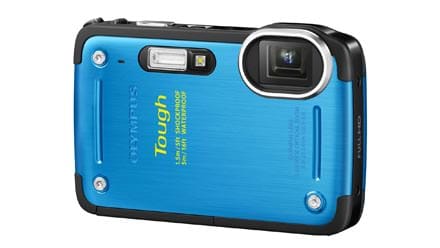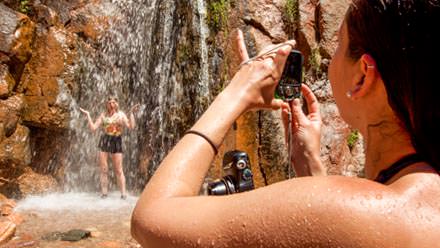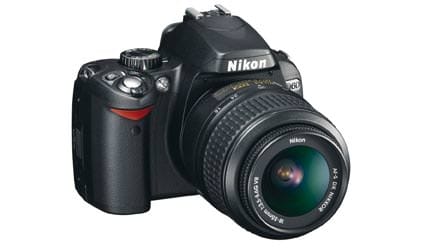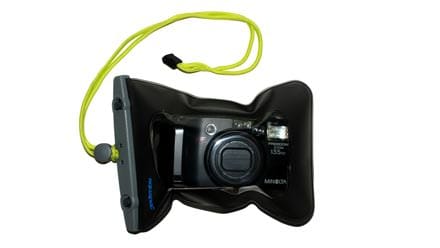
Waterproof/Shockproof Digital Cameras »
These cameras are perfect for everyday use and have become very affordable with most at $100 to $300. They’re rugged and waterproof, but also elegant and trim like any other digital camera.

We get a lot of questions about which camera to bring and how to protect it. Some excellent products have come along in the last few years to ensure that photos and video will be an abundant part of your memories!
Choosing the right camera for whitewater rafting is an important decision. With so many options out there, we discuss the pros and cons of the more common cameras we see on the river.

These cameras are perfect for everyday use and have become very affordable with most at $100 to $300. They’re rugged and waterproof, but also elegant and trim like any other digital camera.

Together with their durable waterproof cases, these cameras can take some nice shots while on and off the water. Generally, the wide angle zoom cannot be adjusted so this should be taken into consideration. We ask that you plan to mount these cameras only with the head strap or helmet mount options (bring your own helmet). You will not be allowed to mount the cameras anywhere on the rafts during travel on the river.

It is possible to bring a larger SLR camera, but be sure to have something sturdy to protect it. We recommend a hard-shell Pelican Case if you’re planning to bring a more expensive camera. Space is limited on the boats, so we try to keep additional camera equipment minimal.

This is a good solution if you aren’t in the market for a brand new camera, but just want to protect the one you have. It is a flexible waterproof housing to fit a number of camera types -- including video cameras. You do need to make sure the plastic housing stays clean as you’re shooting through it, but a lot of our guests find this to be a nice solution.See it at Red Rock Outfitters
While your are in remote areas during your trip, there will not be any location to charge your batteries or devices. Consider bringing extra batteries and memory cards and don't forget to charge your extra batteries before you get to the river.
You are free to film during our trips, however, we ask that you consult with your guide before doing so. We have some guidelines you will be asked to follow. These include: